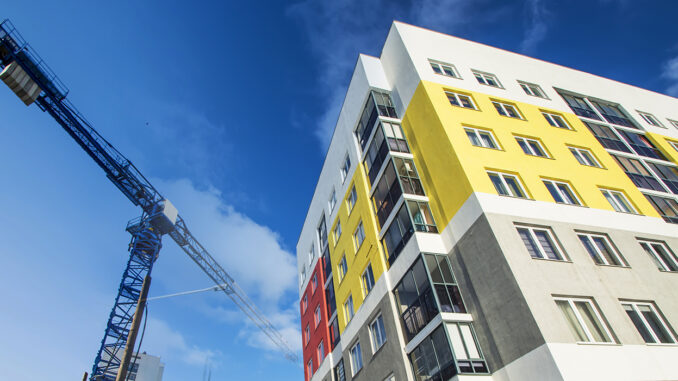
Today, the Planning and Housing Committee will consider a number of City staff reports providing recommendations on tackling housing challenges.
The City of Toronto is committed to addressing housing challenges and developing regulations to expand housing options within neighbourhoods to meet future needs.
With tall apartment buildings at one end of the spectrum and single detached houses at the other, the City is creating opportunities for more variety in housing forms, including low-rise apartments, duplexes, triplexes and townhouses – known as “missing middle housing” – through the Expanding Housing Options in Neighbourhoods (EHON) initiative. This work supports access to more housing choices and creates a more equitable, sustainable city.
Here is a summary of the staff reports being considered today
Expanding Housing Options in Neighbourhoods: Multiplex Study
This report considers ways to simplify zoning and approvals to allow additional units in neighbourhoods while maintaining their low-rise scale. Broadening the types and sizes of units available in low-rise neighbourhoods makes them, along with local amenities such as parks, schools, retail and service, more accessible to a diverse range of people and needs, leading to more equitable and inclusive communities. This report is available at http://app.toronto.ca/tmmis/vi
As of November 18, the City Planning division had received almost 4,000 responses to its multiplex housing survey, with 84 per cent of respondents supporting multiplexes in all neighbourhoods in the city. The survey is available online until December 31 at www.toronto.ca/EHON.
Neighbourhood Change and Intensification
This study examines growth and change within neighbourhoods, with research conducted by City Planning staff on the characteristics and trends in Toronto’s neighbourhoods. The research found that neighbourhoods with more permissive zoning, such as Residential (R) or Residential Multiple (RM), accommodated significantly more people and households per hectare and were more likely to have been experiencing gradual intensification. On average, areas with more permissive zoning had more stable population levels, more diverse housing types, and accommodated a greater range of incomes. The report is available at http://app.toronto.ca/tmmis/vi
Review of Laneway Suites Final Report
A laneway suite is a self-contained residential unit located in its own building, often in the backyard of a lot adjacent to a public laneway. Since 2019, laneway suites have been permitted across the city and are being constructed with increasing frequency. Laneway suites are also being built in a variety of sizes and configurations, creating new housing for different types of household structures across Toronto. This report discusses the outcome of the laneway suite review and monitoring work and recommends several strategic by-law amendments to facilitate their construction and respond to community and industry comments. The report is available at http://app.toronto.ca/tmmis/vi
Parking Requirements for New Development
The Planning and Housing Committee will also consider the Recommended Parking Requirements for New Development report. This report recommends Zoning By-law Amendments to modify the current standards for car and bicycle parking, to better manage car dependency, achieve a better balance between building too much or too little parking and contribute to building more sustainable and healthy communities. The report proposes no minimum or maximum parking standards for low-rise and missing middle housing types, which will help facilitate the construction of this type of housing. The report is available at http://app.toronto.ca/tmmis/vi
The recommendations in the Parking Requirements for New Development report help support the creation of new missing middle housing. The reports on multiplex housing, neighbourhood change, and intensification and laneway suites are all part of the City’s EHON work. The EHON initiative is part of the City’s work to increase housing choice and access in Toronto. For more, visit: www.toronto.ca/EHON.
Quotes
“I am determined to get more housing built for our growing city. Torontonians need more options to address their housing challenges including low scale or ‘missing middle’ housing. When it comes to parking requirements for new developments, I believe staff have recommended a better balance that makes sense. The proposed approach would also help cut red tape, aligns with our climate goals, and will reduce the cost of housing. I look forward to the discussion on all of these reports and I am proud we are getting more affordable housing built in our city.”
– Mayor John Tory
“Gently expanding housing supply in low-rise neighbourhoods will help people at all stages of life – whether they are students, young professionals, families or aging grandparents. As we look to meet the future needs of all of our hardworking residents in this city, the policies and tools we are bringing to the table will have a meaningful impact for generations to come.”
– Deputy Mayor Ana Bailão (Davenport), Chair of the Planning and Housing Committee
“We can do more so that our city is a place where our kids, families, friends and colleagues can all find a home. I invite everyone to join the discussion to permit multiplexes in our neighbourhoods and provide housing choice and access for everyone. This is a key planning tool that will make a difference”
– Gregg Lintern, Chief Planner and Executive Director, Toronto City Planning
Source City of Toronto

Leave a Reply